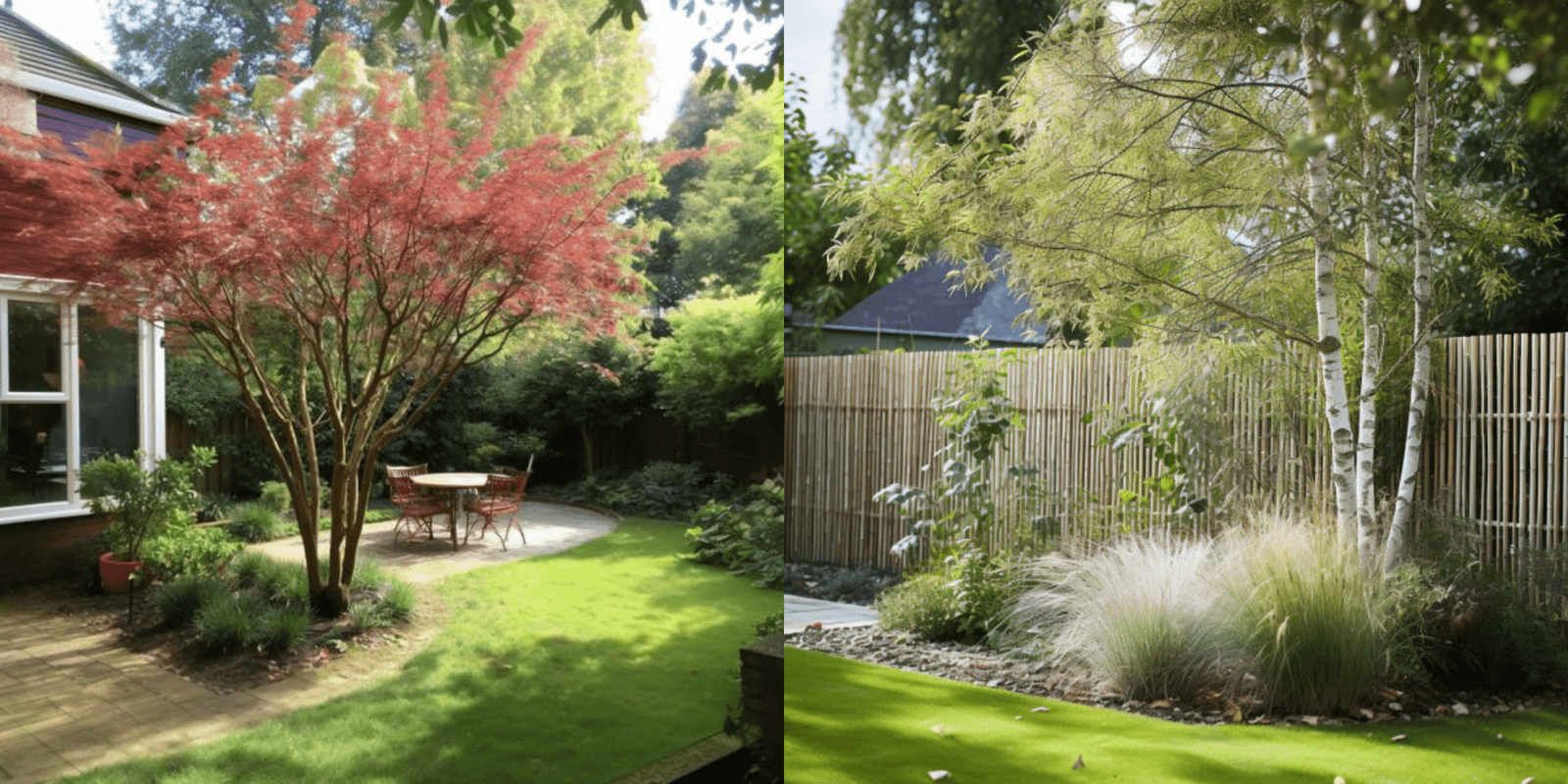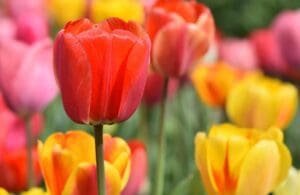Multi-stem trees are a fantastic way to add a touch of uniqueness and character to your garden. With their distinctive structure, they not only bring visual interest but also offer practical benefits to your outdoor space.
In recent years, multi-stem trees have gained popularity, and it’s easy to see why. They’re not just beautiful; they also provide shade, enhance privacy, and are generally easier to maintain than single-stem trees.
Top Tip: Choose multi-stem trees that provide year-round beauty and will suit your garden’s size when they become more mature. Thoughtful selection now saves trouble later.
| Advantages of Multi-Stem Trees | Description |
|---|---|
| 1. Structural and Visual Appeal | Multi-stem trees add structure and interest to gardens, serving as a focal point and enhancing the overall design. They provide a sense of scale and draw attention. |
| 2. Shade and Privacy | These trees are ideal for creating shaded areas and privacy, making them perfect as screens or dividers in gardens. |
| 3. Stability and Weather Resistance | The multiple stems of these trees offer greater stability and resistance to wind and other weather conditions, reducing the need for pruning and support. |
| 4. Minimal Pruning Required | Multi-stem trees naturally develop an attractive branching pattern with minimal pruning, simplifying garden maintenance. |
| 5. Lower Risk of Disease | Damage or disease affecting one stem is less likely to spread to others, reducing the overall risk of disease. |
| 6. Resistance to Pests and Environmental Factors | These trees are more resistant to pests, diseases, and environmental factors like drought and frost, enhancing their durability. |
Recommended Multi-Stem Trees for UK Gardens
1. Amelanchier
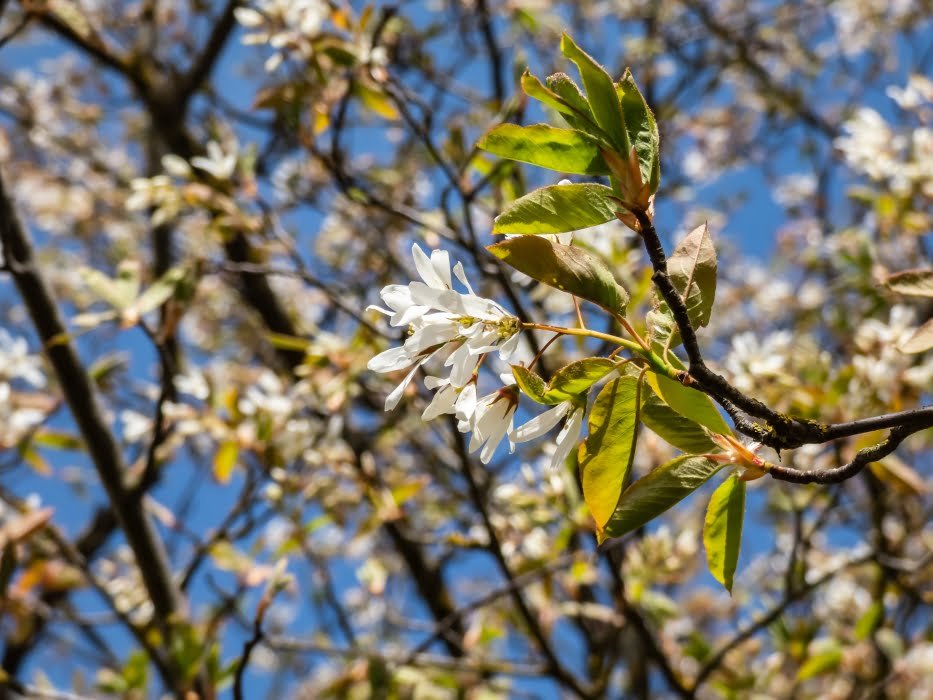
Also known as the Serviceberry, the Amelanchier tree is a charming choice for any garden, especially those with limited space. In spring, it’s a sight to behold with its beautiful display of white flowers. As the seasons change, these flowers give way to edible berries in summer, offering a treat for both gardeners and wildlife.
The Amelanchier’s delicate structure makes it an ideal fit for smaller gardens. It doesn’t just add aesthetic value; its compact size means it can be easily incorporated into various garden designs without overwhelming the space. This tree is not only a visual delight throughout the year but also a practical choice for those looking to support looking wildlife.
2. Himalayan Birch
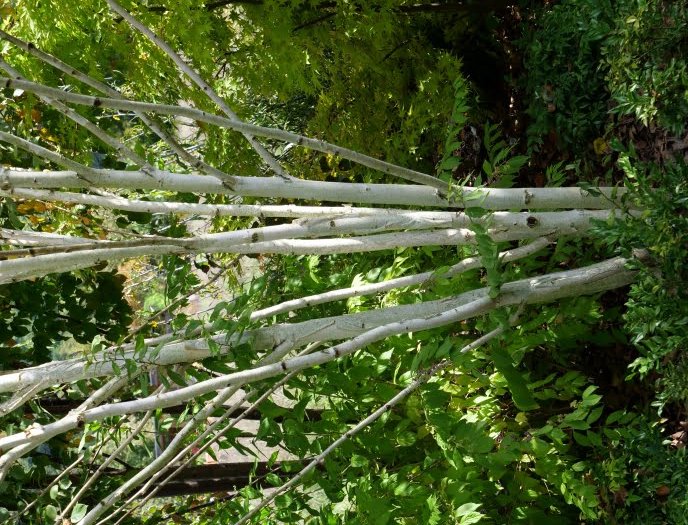
The Himalayan Birch, known for its eye-catching white bark and elegant, weeping branches, is a standout choice for any garden. This tree is not just a visual treat; it’s also fast-growing, allowing you to add height and structure to your garden in relatively short order.
One of the great advantages of the Himalayan Birch is its low-maintenance nature, making it an ideal option for gardeners who want impressive results without too much effort. Its distinctive appearance, with the stark white bark contrasting against green foliage, creates a dramatic and graceful presence in any outdoor space. Whether you’re looking to create a focal point or simply want to enhance the vertical dimension of your garden, the Himalayan Birch is a fantastic choice.
3. Hornbeam
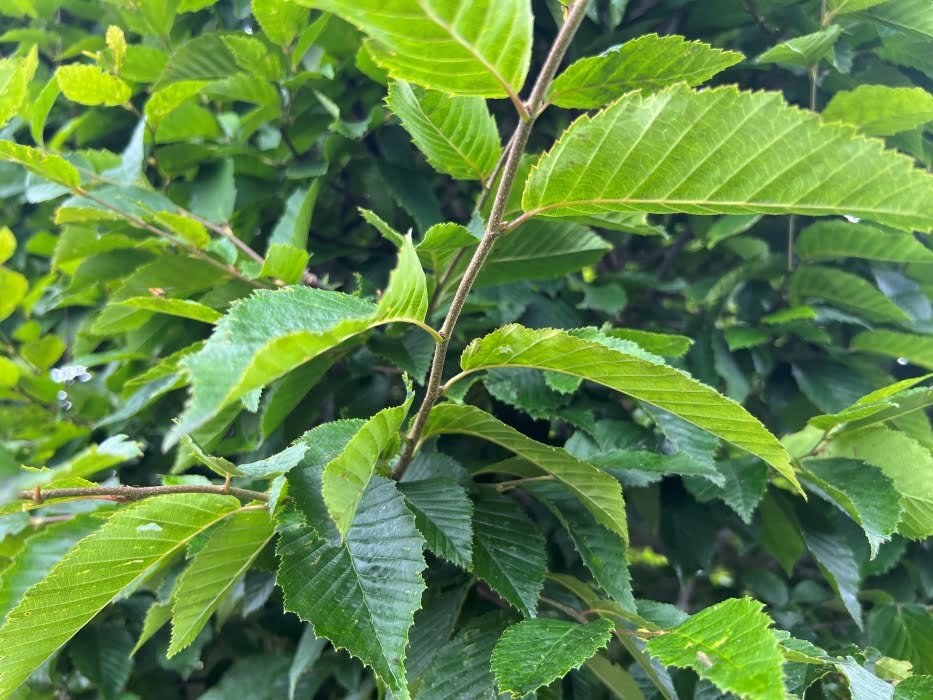
The multi-stem Hornbeam is a truly adaptable addition to any garden, offering a range of growing options. Whether you’re looking for a hedge, a standalone tree, or a pleached tree (trained to grow in a specific shape), this Hornbeam variety fits the bill perfectly.
One of the most striking features of the Hornbeam is its distinctive, ribbed trunk, which adds a unique textural element to your garden. The tree is also celebrated for its lush green leaves, which create a vibrant canopy during the warmer months. As autumn arrives, these leaves transform into a beautiful yellow, adding a splash of seasonal color to your outdoor space.
This versatility, combined with its attractive foliage and seasonal colour changes, makes the multi-stem Hornbeam an excellent choice for gardeners looking to add both functionality and aesthetic appeal to their gardens.4. Tibetan Cherry
4. Persian Ironwood
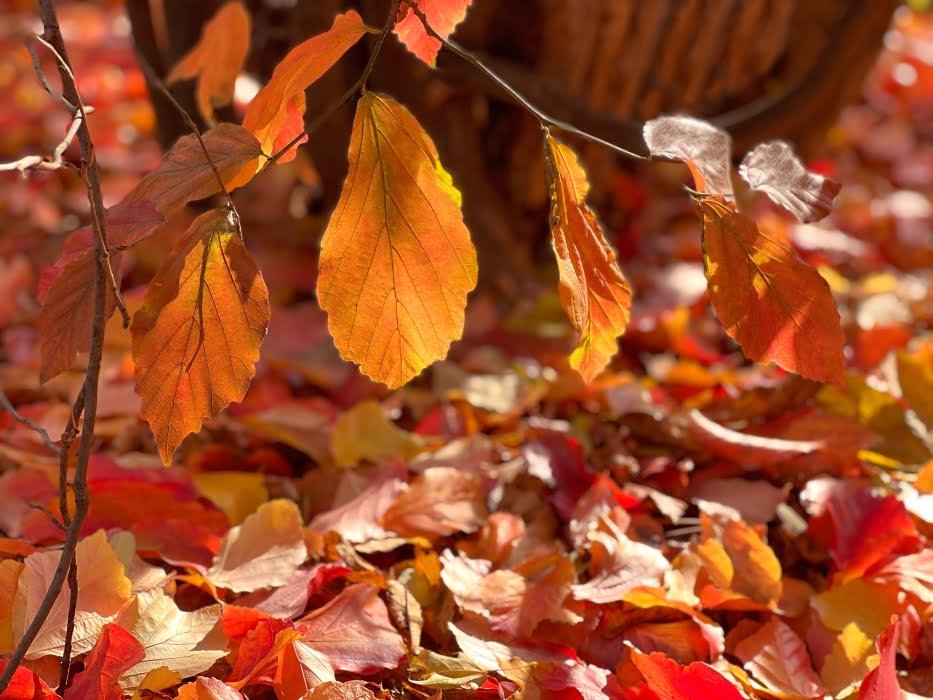
The multi-stem Persian Ironwood is a deciduous tree that truly shines in autumn. Its leaves undergo a stunning transformation, changing from a lush green to a vibrant palette of orange and red. This seasonal display makes it a breathtaking addition to any garden.
Apart from its autumnal beauty, this tree is known for its striking branching pattern. The way the branches spread and intertwine creates a visual interest that captivates year-round. Due to its distinctive appearance and the dramatic color shift in fall, the multi-stem Persian Ironwood is an ideal choice for a focal point in garden designs.
Whether you’re looking to create a standout feature or simply want to enjoy the seasonal changes in your garden, the multi-stem Persian Ironwood offers both aesthetic appeal and a touch of magic.
5. Rowan
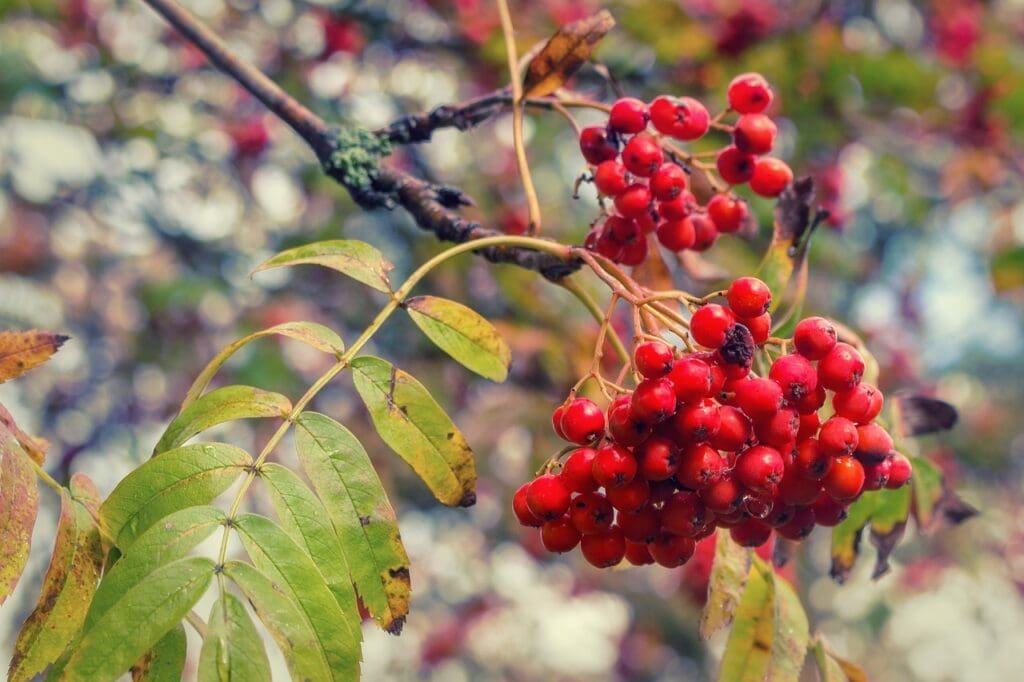
The Rowan, a native tree to the UK, is a splendid choice for those looking to add a touch of natural beauty to their gardens. As a multi-stemmed deciduous tree, it offers year-round interest with its seasonal changes.
In spring, the Rowan tree is adorned with beautiful white flowers, creating a delicate and inviting display. As the seasons turn, these flowers give way to bright red berries in autumn, adding a burst of color to the garden. This transition not only enhances the tree’s visual appeal but also provides a valuable food source for birds.
The Rowan is known for its hardiness, making it a resilient addition to a variety of garden settings. Its ability to attract and support bird life makes it an excellent choice for gardeners looking to encourage wildlife in their outdoor spaces.
6. Crab Apple
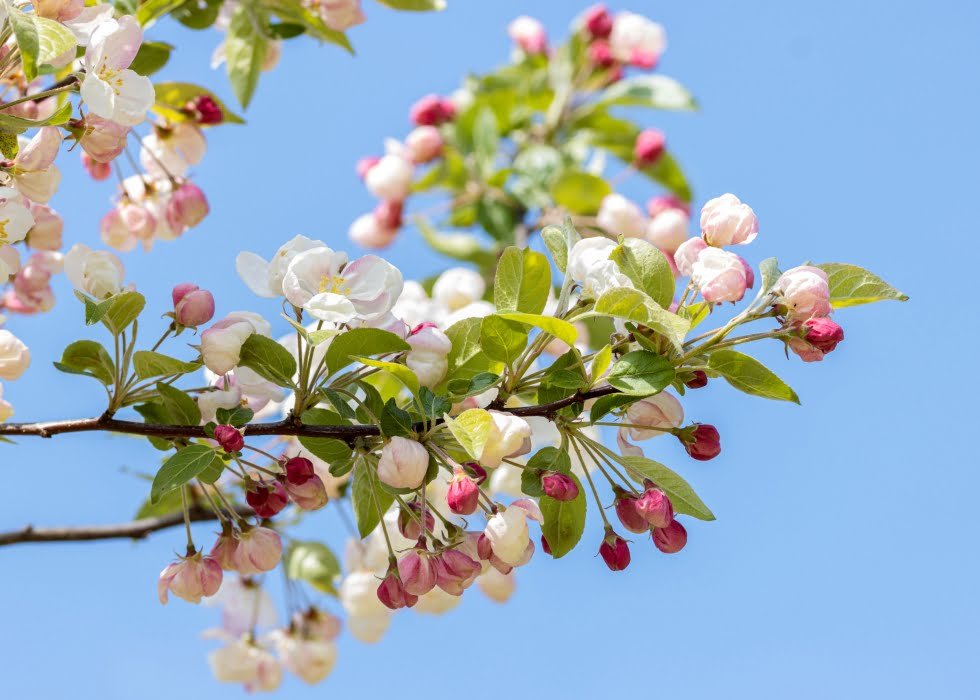
The Crab Apple tree, another cherished native to the UK, is a wonderful addition to any garden, particularly those with limited space. This multi-stemmed tree is celebrated for its stunning spring blossoms, which burst into life in delightful shades of pink and white. These blossoms not only add a splash of color but also bring a joyful vibrancy to the garden.
As autumn rolls in, the Crab Apple tree bears its small, edible fruits. These fruits are not only a treat for the eyes but can also be used in various culinary creations, adding a homegrown touch to your kitchen. The tree’s compact size and the dual appeal of its blossoms and fruits make it a popular choice among gardeners with smaller outdoor spaces.
Whether you’re looking to enhance your garden’s aesthetic appeal or enjoy the practical benefits of homegrown fruits, the Crab Apple tree is a versatile and charming choice that brings beauty and utility to your garden throughout the year.
When choosing a multi-stem tree, consider factors such as the size of your garden, the soil type and location, and the purpose of the tree (such as providing shade or attracting wildlife).
Planting and Care
Once you have chosen your multi-stem tree, it’s important to plant and care for it properly to ensure its health and longevity in your garden. Here are some tips for planting and caring for multi-stem trees:
Best time to plant
The best time to plant multi-stem trees is in autumn or winter when the soil is moist and the tree is dormant. However, container-grown trees can be planted at any time of year, as long as the soil is not frozen.
Soil preparation and location
Multi-stem trees prefer well-draining soil that is rich in organic matter. When planting, ensure that the hole is twice as wide as the root ball and that the top of the root ball is level with the surrounding soil. Multi-stem trees should be planted in a location that receives full sun or partial shade.
Watering and feeding
Newly planted multi-stem trees should be watered regularly until they become established. After that, they only need to be watered during prolonged dry spells. Multi-stem trees can benefit from an annual application of fertilizer in spring.
Pruning and maintenance
Multi-stem trees require minimal pruning compared to single-stem trees, but any dead or damaged wood should be removed to maintain the tree’s health and appearance. Mulching around the base of the tree can help to retain moisture in the soil and suppress weeds.
By following these planting and care tips, you can ensure that your multi-stem tree thrives in your garden and provides beauty and interest for years to come.
Final thoughts
Multi-stem trees are a versatile and low-maintenance option for UK gardens, providing structure, interest, and a range of benefits to gardeners.
With their beautiful branching patterns, striking foliage, and stunning flowers and fruits, multi-stem trees can be used as focal points or integrated into garden designs with other plants and shrubs.
By choosing a multi-stem tree that is suited to your garden’s soil and location, planting and caring for it properly, you can enjoy the beauty and benefits of these trees for many years to come.
Whether you opt for a native variety like the Rowan or Crab Apple, or an ornamental tree like the Persian Ironwood or Himalayan Birch, a multi-stem tree is sure to add interest and beauty to your garden.
Frequently Asked Questions
Q: What is the prettiest tree in the UK?
Beauty is subjective and can depend on personal preferences. However, the Japanese Cherry, or Sakura (Prunus serrulata), is often considered one of the prettiest trees due to its stunning pink blossom display in the spring.
Q: What are the benefits of multi-stem trees?
Multi-stem trees provide a range of benefits. They offer a unique aesthetic appeal with their multiple trunks and can create a more substantial presence in a garden. Additionally, they often have a wider canopy, which can provide more shade. Their structural complexity can also support a higher biodiversity than single stem trees.
Q: Should you stake a multi-stem tree?
While some multi-stem trees may need staking at the time of planting to help them establish, it’s not always necessary. The need for staking depends on the size, species, and location. Always consult with a local horticulturist or arborist to ensure proper planting and care.
Q: How tall do multi-stem silver birch trees grow?
Multi-stem silver birch trees, like their single-stem counterparts, can reach heights of up to 20-30 feet (6-9 meters). Growth rate and ultimate height can depend on factors like soil, climate, and care.
Q: What is the best tree to plant near a house in the UK?
The best tree to plant near a house would be one with non-invasive roots and a size appropriate for the space. Hawthorns, crab apples, and some smaller cherry tree varieties can be good options.

